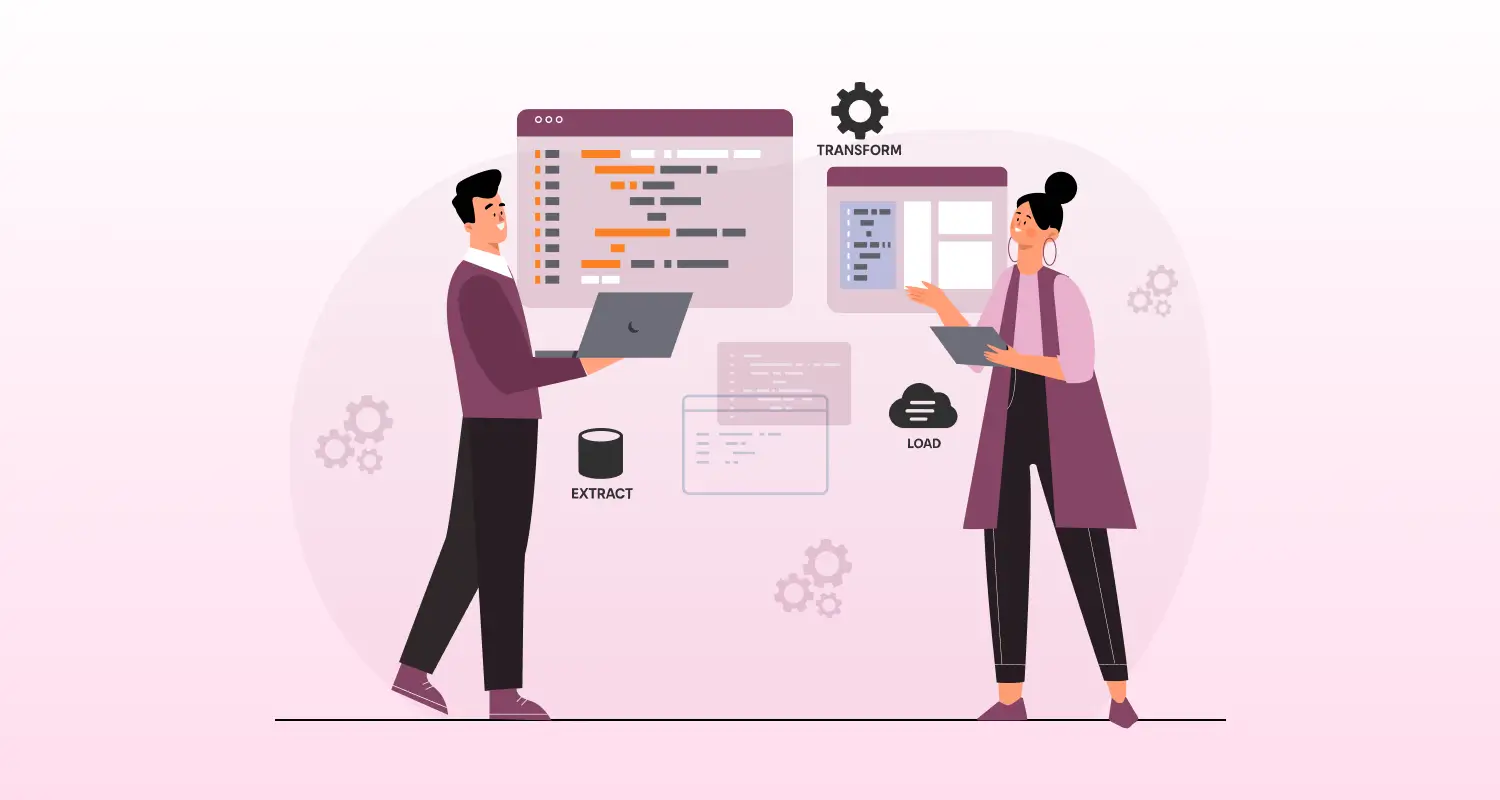ETL vs ELT is one of the most searched and important comparisons in the field of data. ETL is extract, transform, load whereas ELT is extract, load, transform. They refer to the same process for data pipeline workflows, but the processing order and tooling’s differ significantly.
What are the Key Difference in Process Order Between ETL and ELT?
| Step | ETL | ELT |
| Extract | Extract from sources | Extract from sources |
| Transform | Clean/transform in middle layer | Transform inside the data warehouse |
| Load | Load clean data to destination | Load raw data to destination |
ETL – Traditional Data Pipelines
- Transformation happens before loading.
- Common in on-premise systems with limited warehouse resources.
- Used with tools like Informatica, Talend, SSIS.
- Good for strict governance and batch processing.
When to use ETL:
- Your data warehouse is expensive to scale
- You want tight control over transformation logic
- Compliance requires filtered/cleaned data in the warehouse
ELT – Modern Cloud-Native Pipelines
- Data is loaded raw into a warehouse like BigQuery, Snowflake, Redshift.
- Transformations run inside the warehouse using SQL or dbt.
- Takes advantage of high-performance, scalable cloud compute.
When to use ELT:
- You’re using a cloud-native warehouse
- You want to maintain a raw data layer
- You need flexibility for multiple transformations
Code Example: ELT with SQL in Snowflake
-- Raw data already loaded in table: staging_users
CREATE OR REPLACE TABLE cleaned_users AS
SELECT TRIM(full_name) AS name, LOWER(email) AS email, TRY_TO_DATE(signup_date, 'YYYY-MM-DD') AS signup_date
FROM staging_users
WHERE is_active = TRUE;ETL vs ELT Differences Comparison Summary
| Feature | ETL | ELT |
| Transformation location | Before load (middleware/server) | After load (inside warehouse) |
| Performance | Depends on ETL server | Optimized by cloud warehouse |
| Flexibility | Moderate | High (access to raw data) |
| Common tools | SSIS, Talend, Informatica | dbt, SQL, cloud-native ETL engines |
| Ideal for | Legacy systems, compliance needs | Scalable, modern cloud workloads |
Final Takeaway
ETL and ELT serve the same purpose: moving and transforming data. But they differ in execution architecture. Choose ETL for controlled, legacy, or compliance-heavy workflows. Use ELT when working with cloud-native warehouses that can handle large-scale transformations natively. To implement the right approach efficiently, it’s smart to hire a data engineer who understands both architectures and the tools that power them.





